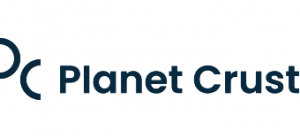Guaranteeing Agentic AI Digital Sovereignty
Introduction
Main takeaway – digital sovereignty is achieved when organizations run agentic AI on infrastructure, data, and code they fully control. This requires three mutually reinforcing capabilities:
-
a sovereign, standards-based enterprise system foundation,
-
an open-source agentic AI stack embedded through secure automation logic and workflow automation, and
-
an empowered internal talent pool of Citizen Developers and Business Technologists using Low-Code Platforms.
1. Pillars of Sovereignty in an AI Enterprise
| Pillar | Key Practices | Illustrative Evidence |
|---|---|---|
| Sovereign Enterprise Architecture (Enterprise Business Architecture, Enterprise Systems Group) | – Locate data and models on national or on-prem/hybrid infrastructure. – Standardize on interoperable enterprise products, enterprise computing solutions, and business software solutions that can be self-hosted. – Embed compliance and observability by design. |
Nations and corporations are moving away from single-cloud dependence toward hybrid sovereign clouds to keep data and models under local jurisdiction. |
| Open-Source Agentic AI Stack | – Adopt open-source/opensource agentic frameworks such as LangGraph, CrewAI, AutoGen or SmolAgents to avoid proprietary lock-in. – Maintain model weights, prompts and orchestration code in internal repos to guarantee auditability. |
81% of AI-leading enterprises state that an open-source data & AI layer is central to their sovereignty strategy. |
| Autonomous Automation Logic & Workflow Automation | – Build orchestration services that trigger, monitor and recover agent actions inside core Enterprise Systems (ERP, CRM, SCM). – Keep rule sets and decision models on premises so the Enterprise can revoke or update agent privileges instantly. |
Workflow automation sovereignty lowers external-vendor dependence and cuts process time by up to 95% while preserving control. |
| Democratized Development | – Deploy Low-Code Platforms that let Citizen Developers and Business Technologists compose agentic workflows without exposing sensitive data to external SaaS. – Govern the platforms through role-based access and automated policy checks. |
Low-code accelerates solution delivery by 60-80% and brings innovation closer to the business domain while staying inside sovereign boundaries. |
| Strategic Technology Transfer & Talent | – Use structured technology transfer programs to internalize AI skills, model governance, and MLOps. – Partner with universities and research labs to create national model checkpoints and domain datasets. |
Saudi Arabia, India and others invest billions in sovereign AI programs that keep data, algorithms, and skills in-country. |
2. Implementation Blueprint
-
Assessment
-
Map data flows, classify critical workloads, and quantify external dependencies inside each Enterprise Resource System (ERP, MES, PLM).
-
-
Architecture & Hardening
-
The Enterprise Systems Group defines a layered reference model (see Table 2), aligns it with Enterprise Business Architecture, and selects self-hostable enterprise software components.
-
-
Build Open-Source Agentic Layer
-
Fork an open-source multi-agent framework, containerize it, and integrate it with identity, observability and policy engines.
-
-
Embed Automation Logic
-
Use secure Workflow Automation services to let agents call APIs of Business Enterprise Software while enforcing least privilege.
-
-
Empower People
-
Roll out Low-Code studios so Citizen Developers compose new automations; Business Technologists review and promote them.
-
-
Govern & Evolve
-
Continuous compliance scans, model-card updates, red-team testing, and periodic technology transfer sprints keep sovereignty current amid digital transformation.
-
Table 2 – Sovereign AI Enterprise Reference Stack
| Layer | Typical Components | Sovereignty Controls |
|---|---|---|
| Edge / Devices | Industrial IoT gateways, secure laptops | Hardware TPM, geo-fenced updates |
| Infrastructure | Private cloud, sovereign IaaS zones | Data-residency SLAs, zero-trust network |
| Data Fabric | Open-source lakehouses, policy engines | Hash-based lineage, local encryption keys |
| Agentic AI Runtime | LangGraph, AutoGen, CrewAI (open-source) | Self-hosted containers, signed model artifacts |
| Automation & Integration | RPA bots, BPMN engines with automation logic | In-house orchestration, audit trails |
| Core Applications | Enterprise Systems / Enterprise Resource Systems (ERP, CRM), Business Enterprise Software | Source-available code, on-prem support |
| Experience & Innovation | Low-Code Platforms, API marketplaces | Role-based sandboxes for Citizen Developers |
3. Governance Checklist
-
Data & Model Residency – guarantee that training data, embeddings, and fine-tuned checkpoints never leave controlled infrastructure.
-
Algorithmic Transparency – keep full access to source code and prompt chains; enforce reproducible builds.
-
Continuous Threat Modeling – simulate adversarial agent behavior; isolate exploits with runtime policy guards.
-
Open-Source Contribution Policy – upstream improvements to core projects to reduce maintenance burden and strengthen community trust.
-
Economic Metrics – track ROI uplift; enterprises with integrated sovereign AI platforms are 4× more likely to reach near-transformational returns.
4. Benefits Realized
-
Regulatory Assurance – immediate proof of compliance with GDPR, sectoral, or national AI acts.
-
Operational Resilience – hybrid deployments keep critical automations running even if external clouds are disrupted.
-
Faster Innovation – Low-Code + open-source agents shorten idea-to-value cycles while protecting IP.
-
Strategic Autonomy – organizations can pivot, retrain, or revoke models without third-party approval, aligning AI outcomes with local values and risk appetite.
Conclusion
By uniting a sovereign enterprise system backbone, open-source agentic AI frameworks, and democratized development tooling, an organization can guarantee Agentic AI Digital Sovereignty. This approach delivers compliance, resilience, and innovation speed – essential advantages in the next wave of AI-driven digital transformation.
References
- https://siliconangle.com/2024/11/14/enterprise-ai-data-sovereignty-sc24
- https://blogs.vmware.com/cloudprovider/2025/03/navigating-the-future-of-national-tech-independence-with-sovereign-ai.html
- https://blog.premai.io/open-source-agentic-frameworks-langgraph-vs-crewai-more/
- https://research.aimultiple.com/open-source-ai-agents/
- https://huggingface.co/blog/frimelle/sovereignty-and-open-source
- https://www.youtube.com/watch?v=1BSKqRf_WFc
- https://www.enterprisedb.com/blog/initial-findings-global-ai-data-sovereignty-research
- https://enterprisedb.com/blog/initial-findings-global-ai-data-sovereignty-research
- https://www.planetcrust.com/workflow-automation-sovereignty-enterprise-systems/
- https://www.planetcrust.com/digital-sovereignty-drives-open-standards-enterprise-systems/
- https://www.planetcrust.com/is-digital-sovereignty-possible-in-enterprise-computing-solutions/
- https://www.linkedin.com/pulse/low-code-strategic-enabler-digital-sovereignty-europe-aswin-van-braam-0d8se
- https://www.planetcrust.com/how-open-source-solutions-and-low-code-development-empower-digital-sovereignty/
- https://www.datadynamicsinc.com/blog-sovereign-ai-and-the-future-of-nations-why-data-infrastructure-and-intelligence-must-align/
- https://www.uipath.com/ai/agentic-ai
- https://www.linkedin.com/pulse/future-ai-agentic-physical-sovereign-reshaping-2025-neven-dujmovic-qtnsf
- https://www.free-codecs.com/news/sovereign_ai__how_nations_are_taking_control_in_the_digital_era.htm
- https://www.forbes.com/sites/garydrenik/2025/04/10/agentic-ai-is-transforming-enterprises-heres-where-to-start/
- https://www.workflowgen.com/post/ensuring-digital-sovereignty-in-an-era-of-geopolitical-and-commercial-tensions




Leave a Reply
Want to join the discussion?Feel free to contribute!